Pussy Power: Cats As Feminist Icons

Ladies, gentlemen, and nonbinary humans, what you are about to witness is the tale of a true feminist icon. Her name? Cinnamon. Her purpose? Protector of Peel Street from rodent populations.
It all began on a nondescript night in late October, on my living room floor. It was surprisingly small, but full of life nonetheless, and it made me shriek, scream out the name of everyone in the vicinity. The “it” in question was a mouse, and unfortunately both my flatmates had earphones in, so I was screaming for a long time, standing on the sofa, paralysed with terror. I am strong and brave and capable – until rodents are involved.
After Mouse Gate, I had a mission. And that mission? Mouselessness. It took bravery (I refused to enter the living room for a week), a feat of tremendous strength (emailing the letting agency and asking if they could bend their no pets policy), and patience (the week or so that passed between calling the cat shelter and getting a cat), but finally, I met The One. I knew she would have a special place in my heart from the moment we met, because she was just like me: dramatic, affectionate, attention-seeking. She knew what she wanted (cuddles), and she wasn’t afraid to ask (meow) for it.
Cinnamon is a Scorpio, with her moon in Sagittarius. She is 10 years old, named after Lana del Rey’s song “Cinnamon Girl”, and she has transformed 2/3 of the household into what would traditionally be known as “crazy cat ladies”. In this piece of ground-breaking journalism, I will argue the following: “crazy cat lady” = strong independent woman, and cats = feminist icons.
The words “pussy” and “power” start with the same letter. Coincidence? I think not. But let’s get forget about semantics, and look at the habits and lifestyle choices of cats. This goes beyond a name or title; the secret to their success is in their actions.
Cats know what they want. Cinnamon likes to eat, get high on catnip, cuddle, and drool. She likes to have an active social life, and her hobbies include climbing over houseguests’ shoulders and/or heads, smushing her furry white belly over black clothes, and being spoken to in foreign languages. She has many nicknames, ranging from “Cinnamonster” to “(Cinna)mini” to “stop fucking meowing for fuck’s sake, it’s 5am!”, but regardless of what she is called, Cinnamon makes sure her needs are respected.
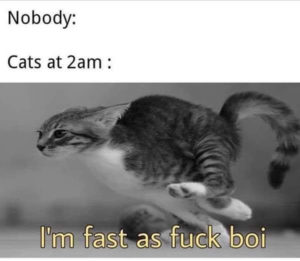
As Laura Mulvey noted in Visual Pleasure and Narrative Cinema, men are active bearers of the gaze, and women are passive receivers of the gaze. If you are not a film student who has read this several times a year for the entirety of your degree, Mulvey’s thesis is essentially that there is a “male gaze”. Men look, women are looked at. (It’s a lot more complicated than that, but I’m writing this blog to procrastinate my dissertation, so I don’t want to get too deep into film theory right now).
Cinnamon, however—feminist icon that she is—will only be looked at on her own terms. You may want to take a photo of her pretty face, but she will shove her butthole in front of the camera, meowing something that probably translates to “who’s empowered now, bitch?” Cinnamon demands that she, and only she, will construct the gaze she is viewed through. Sometimes, she refuses to be seen at all. If I yell at her for sharpening her claws on the side of an armchair, she will run to the far side, where I can’t see her at all, and continue to attack the furniture. Because Cinnamon makes the rules in this household.
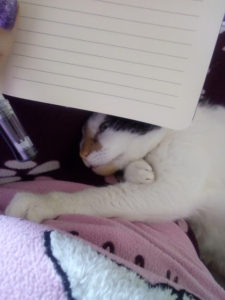
Cats, like feminists and all well-adjusted humans, know the importance of boundaries. Cinnamon loves cuddles, but only on her own terms. If I try to pick her up and carry her around, she will meow at me to assert that I have crossed a line. However, if I lie down on my bed, or the floor, or sit on the sofa, Cinnamon will climb all over me. Sometimes she extends her furry arms around my neck and gives me a hug. Other times, she plants her butt on my laptop and drools all over my chest. When she’s particularly contented, she will massage my chest and pierce my skin with her claws.
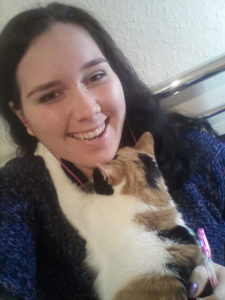
No matter how good our intentions as feminists are, we often fall short. Cats are like feminists because they, too, are flawed. Cinnamon knows how to ensure that I respect her boundaries, but does she respect mine? She meows outside bedroom doors at 5am, she has a strange habit of grabbing people’s nipples with her claws, she meows plaintively in a devious scheme to be fed breakfast twice. Perhaps it is Cinnamon’s flaws that make her the truest feminist. The truth is: we are all Cinnamon. We are all strong, and flawed, and desperate to be loved on our own terms.
The word “crazy” is often used to describe women who subvert societal norms and expectations. As women, we have been socialised to believe our worth comes from being valuable to men. Are we pretty enough? Thin enough? Loveable enough? Are we good girls who are seen and not heard? We are taught not to rock the boat, not to speak up for ourselves, not to meet our own needs.
Cats don’t play games (okay, they play the kind involving toys filled with catnip), they are upfront about their wants, they show affection freely. Cats don’t ghost, don’t toy with our feelings, they love in a simple way, free from the cage of social influence. I’ve met so many men who couldn’t express their emotions or talk about their feelings in a healthy way, because men are conditioned to bottle up the same feelings that women are conditioned to communicate about (yes this is a generalisation, “not all men” and all that).
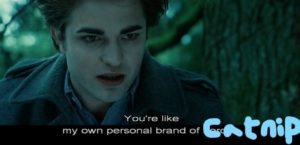
Having pets as a source of love and fulfilment doesn’t make women “crazy” – in fact, it is a form of radical self-love. Many people, particularly “millennials” (or, you know, any person who’s vaguely young), have been criticised for viewing their pets as children. This is another way crazy cat ladyism is a way to live a feminist life – it transgresses the societal expectations regarding offspring. We can take care of other creatures without having to bring another person into this anxious and unsettling world. We can create our lives on our own terms, and our cats help us do so.
This is not to say cats are a substitute for a romantic relationship, because that implies romantic relationships are the only way to be fulfilled in life. Further, it ignores the fact that people are at different points in their lives, and implies that all women would desire romantic relationships with men (which ignores bi/lesbian women and women on the ace/aro spectrum). This is not a battle between cats and men (cats would win), it is an acknowledgement that there is more than one way to live a full life, and squashing yourself into the narrow slot society has created for you does not always lead to lasting fulfilment. Cats, on the other hand, guarantee happiness (unless you have allergies, or your cat doesn’t like you).
I am 22, and my flatmate is 30. Perhaps our cat means different things to us, represents different stages of our lives. Perhaps she doesn’t represent anything at all. Cinnamon is not a metaphor; she is not a substitute; she is a furry lil drama queen who demands attention and respect. And she is, ultimately, a feminist icon.
Loving Cinnamon does not make me crazy; it is a reminder that I am a strong independent woman. Cinnamon taught me what love means: love is security (I don’t have to worry about mice now), love is affection, love is respecting each other’s boundaries, love is give-and-take. Most of all, love is a combination of an unexplainable spark and a conscious choice. There were other cats at that shelter, and other potential owners who must have visited, but Cinnamon and I chose each other.
From one dramatic bitch to another: I love you Cinnaminnie.
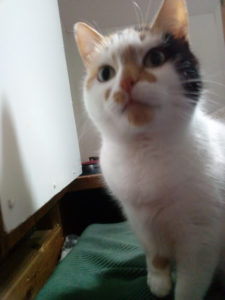
Thank you to Sanni for suggesting this blog topic!
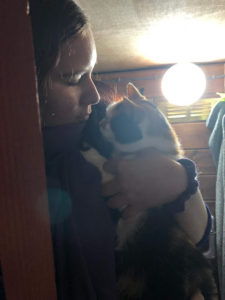
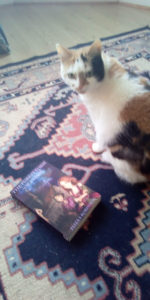





![Are you even writing a fantasy novel if you don't put "[city name]" as a placeholder for the entire first draft, in the vain hope that a decent name idea will fall from the sky?](https://scontent-iad3-1.cdninstagram.com/v/t51.29350-15/433120656_7589088614488947_7107574729914867154_n.jpg?_nc_cat=108&ccb=1-7&_nc_sid=18de74&_nc_ohc=sOECTC7kOIsAb4P9xoe&_nc_ht=scontent-iad3-1.cdninstagram.com&edm=ANo9K5cEAAAA&oh=00_AfCK6NFnhXN5p6jhpqbjnfYj1Qz6fat5xMU7SJT_ibXFoA&oe=662DA0DA)



